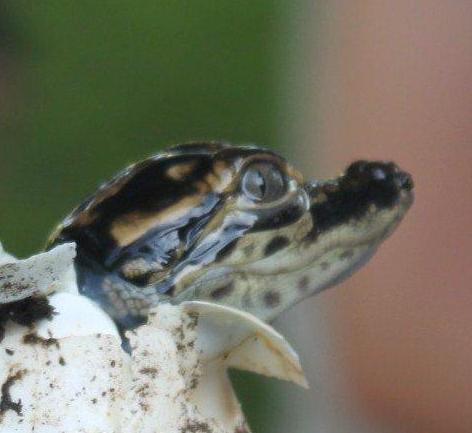|
Description – Upper body parts are encased in a bony carapace with nine bands between shoulder and rump shields. It has long, strong claws, a narrow, almost pointed snout and a tapering armored tail. Head and body length 38 – 43 cm. (15 – 17 in.); tail 36 – 41 cm. (14 – 16 in.); wt. 4 – 8 kgs. (8-18 lbs.)
Distribution in Texas – Statewide, except western Trans-Pecos region.
Habitat – Usually nocturnal and solitary, this mammal prefers areas with loose soil, such as forest floors and waters’ edge. Often jumps when startled. Its excellent sense of hearing and smell make up for its very poor eyesight. It can smell insects up to eight inches deep. It digs dens underground, usually at the base of trees, and with more than one opening. The armadillo may have more than one den. Since the armadillo is not a very fast runner it will escape to a nearby den. If it has wandered away from a den, it will simply dig itself a new one in a hurry to escape predators! Nine-banded armadillos, contrary to popular belief, cannot roll themselves into a ball.
Since armadillos have no fat storing ability, they tend to inhabit warmer climates.
Diet consists mainly of insects but is supplemented with crayfish, eggs and various small reptiles and amphibians.
Breeding season is usually in June and July. Delayed implantation allows the egg to float in the uterus until November and then be born the following spring. Armadillos always have identical quadruplets that are born fully formed with eyes open. Life span in the wild is 7 – 10 yrs. Armadillos are good swimmers, which may have attributed to the fastest know mammal migration from Mexico to the U.S. in the twentieth century. Nine-banded armadillos are the only species of armadillo found in the U.S. There are several other different species that inhabit South America.
The gene that causes leprosy can be found in armadillos but the occurrence is extremely low and no contraction to humans has been recorded. Scientists are studying this mammal in hopes of finding a treatment or cure for the disease in humans.
|




